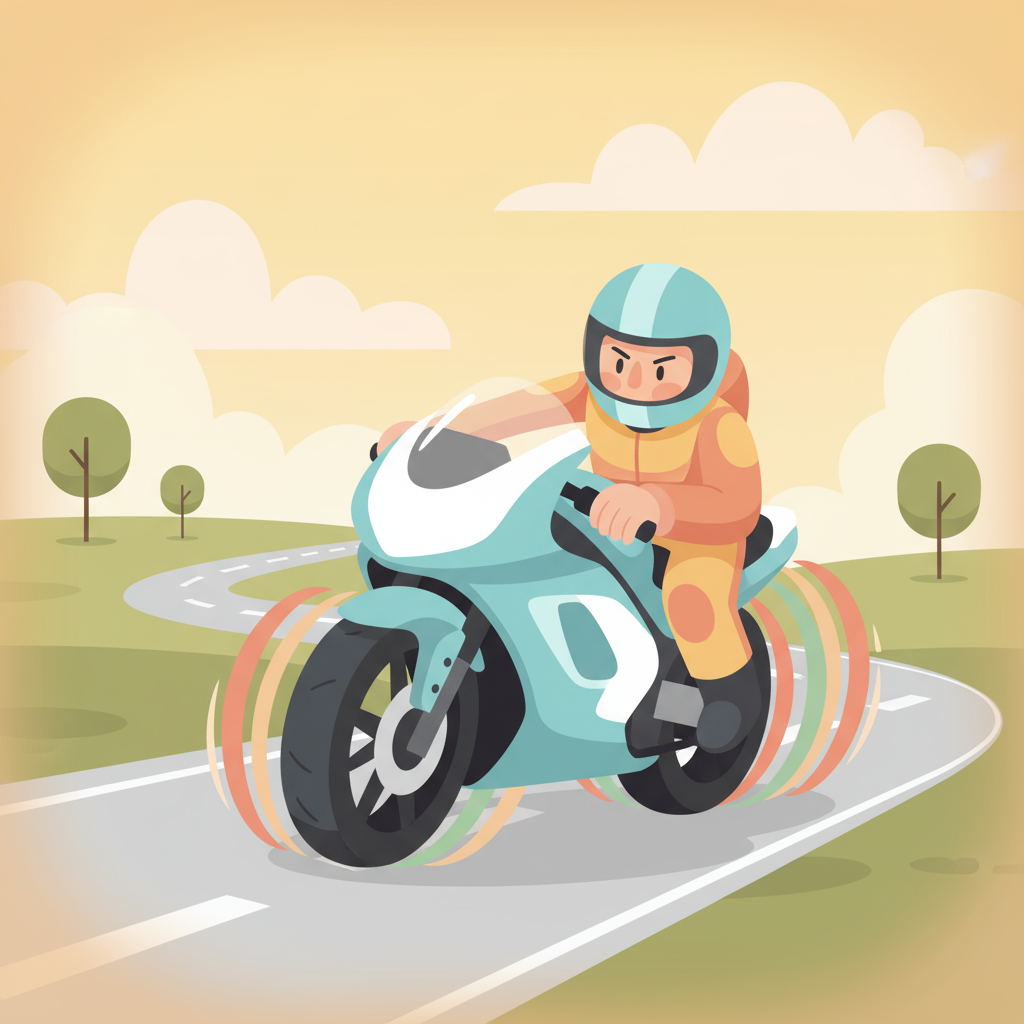As a biker, having quick reflexes is not just a nice-to-have skill—it is essential for your safety and performance on the road or trail. The faster you react to sudden obstacles, changes in terrain, or the actions of other riders, the better you can avoid accidents and keep control.
The good news is that developing quick reflexes is very much possible through consistent practice and simple daily habits. You do not have to spend hours training; small daily drills and awareness exercises can sharpen your brain’s reaction time and your body’s responsiveness.
In this article, we will explore three straightforward daily habits that can help you improve your reflexes effectively. These habits are easy to fit into your routine, scientifically grounded, and proven by pro riders to deliver results.
Your 3 Daily Habits to Develop Quick Reflexes
Habit 1 6 Light Reflex Training
Why: Fast reaction starts with how quickly your brain processes visual cues. Practicing light reflex drills improves neural pathways to react to sudden stimuli faster.
How: Use a reaction timer app on your phone or computer daily. Whenever a light changes color or a signal appears, tap the screen as fast as you can. Aim to lower your reaction time step-by-step.
Cue: Perform this habit right after your morning coffee or breakfast as a simple warm-up exercise.
Habit 2 6 Hand-Eye Coordination Drills
Why: Biking relies heavily on hand-eye coordination for throttle control, braking, and quick turns. Strengthening this connection speeds up reflexes and enhances precision.
How: Practice the “partner drop test” by catching a dropped ruler or small object without warning. Alternatively, juggle two tennis balls against a wall to boost focus and coordination.
Cue: Build this habit during your evening relaxation time or as a break from screen time.
Habit 3 6 Mental Scanning and Peripheral Vision Exercises
Why: Quick reflexes are not just about speed but also anticipating danger. Improving peripheral vision and mental scanning helps you spot obstacles or riders early.
How: Spend a few minutes looking straight ahead while tracking movements at your sides, like passing cars or people. Also, practice scanning ahead mentally to picture your path and potential hazards.
Cue: Do this habit before any ride to boost alertness and awareness.
Week 1 Schedule
| Day | Light Reflex Training | Hand-Eye Coordination | Mental Scanning/Peripheral Vision |
|---|---|---|---|
| Monday | 5 minutes | 5 minutes | 5 minutes |
| Tuesday | 5 minutes | 5 minutes | 5 minutes |
| Wednesday | 5 minutes | 5 minutes | 5 minutes |
| Thursday | 5 minutes | 5 minutes | 5 minutes |
| Friday | 5 minutes | 5 minutes | 5 minutes |
| Saturday | 5 minutes | – | 10 minutes outdoor observation |
| Sunday | – | 10 minutes | 5 minutes |
Troubleshooting
Barrier: Finding time daily.
Fix: Combine reflex training with habits you already have, like using your phone or unwinding. Just a few minutes counts to develop quick reflexes.
Barrier: Getting bored with repeated drills.
Fix: Mix up your drills by changing apps, objects, or environment. Add friendly competition by challenging a riding buddy to reflex games.
Barrier: Forgetting to do the exercises before riding.
Fix: Tie the mental scanning and peripheral vision exercises to your pre-ride checklist so they become a natural part of your routine.
FAQs
Q: Can reflexes really improve with practice?
A: Absolutely! Reflexes involve your brain and muscles working together. The more you practice reaction drills, the sharper and faster your responses become.
Q: How long before I see improvement?
A: Many bikers notice better reaction times within a couple of weeks with consistent daily practice. The key is regularity and staying motivated.
Q: Do I need special equipment?
A: No special gear is required. Simple things like rulers, tennis balls, or free reaction timer apps are enough to help you develop quick reflexes efficiently.
Tracking & Motivation Tips
Use a small journal or your phone notes to track your reaction times each day. Celebrate small wins like shaving milliseconds or catching every drop in the ruler test. Sharing progress with riding friends or online communities also boosts motivation while you develop quick reflexes.
Key Takeaways For Developing Quick Reflexes
Developing quick reflexes as a biker is achievable through consistent, simple daily habits focused on reaction time, hand-eye coordination, and mental awareness. Use light reflex drills, coordination exercises, and peripheral vision training regularly to make your reflexes faster and riding safer. Remember that progress comes with persistence, so keep practicing a little each day for lasting improvement.
Join the Waitlist
Ready to put these habits into action? Dayspire helps you reach any goal with simple daily habits. Join the waitlist now to be the first to get invited to Dayspire!




